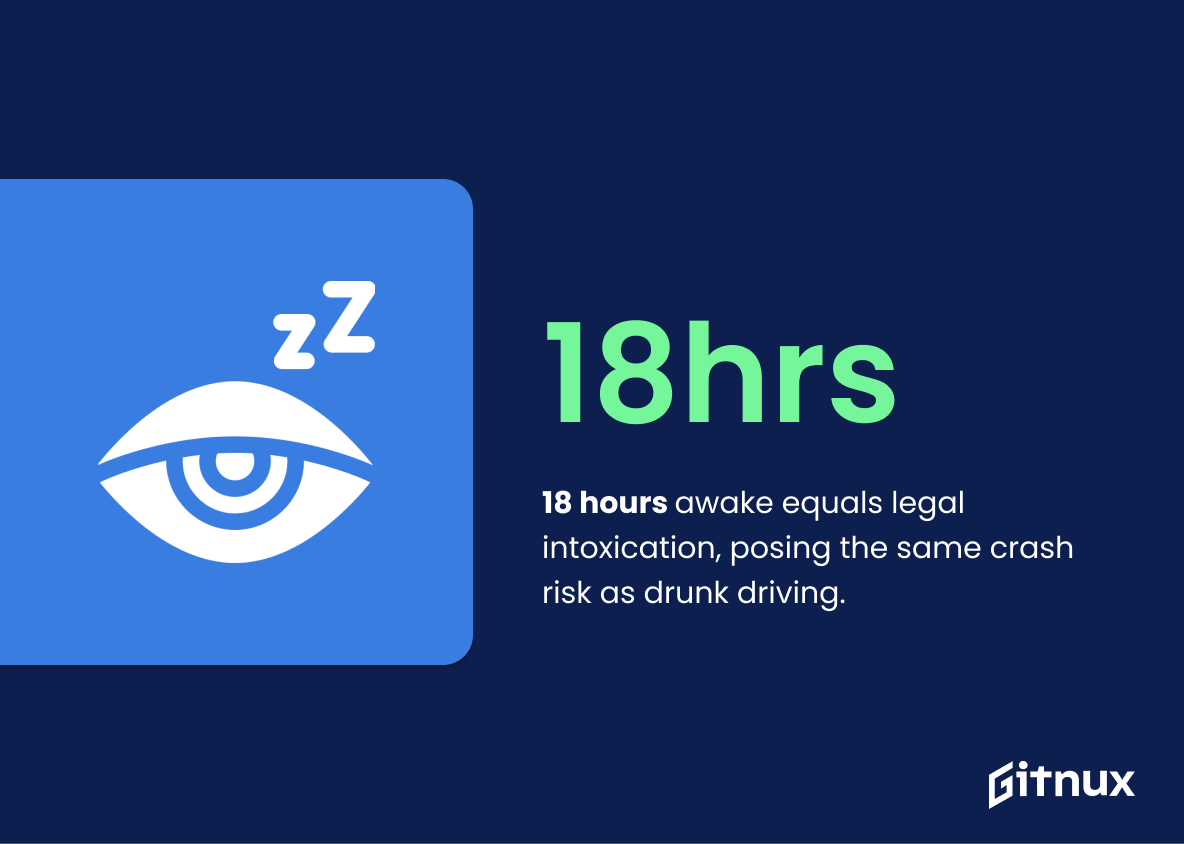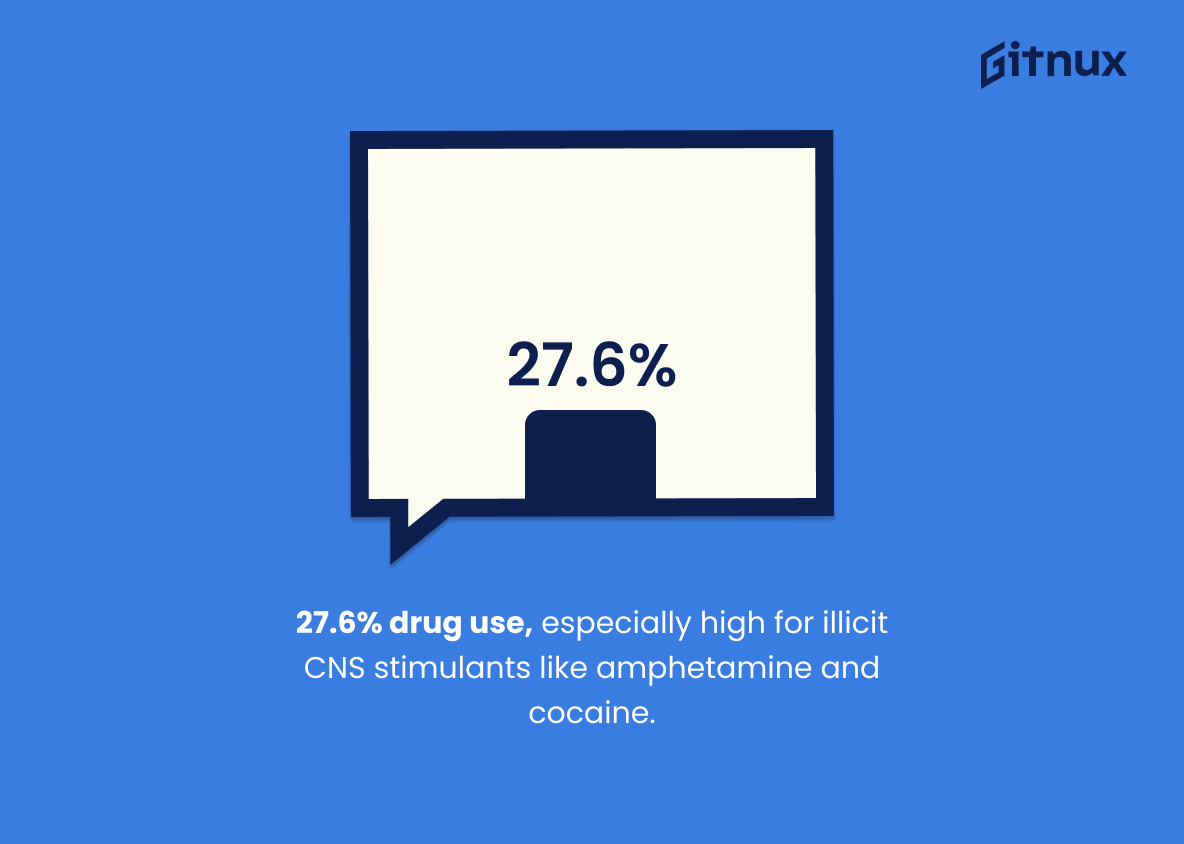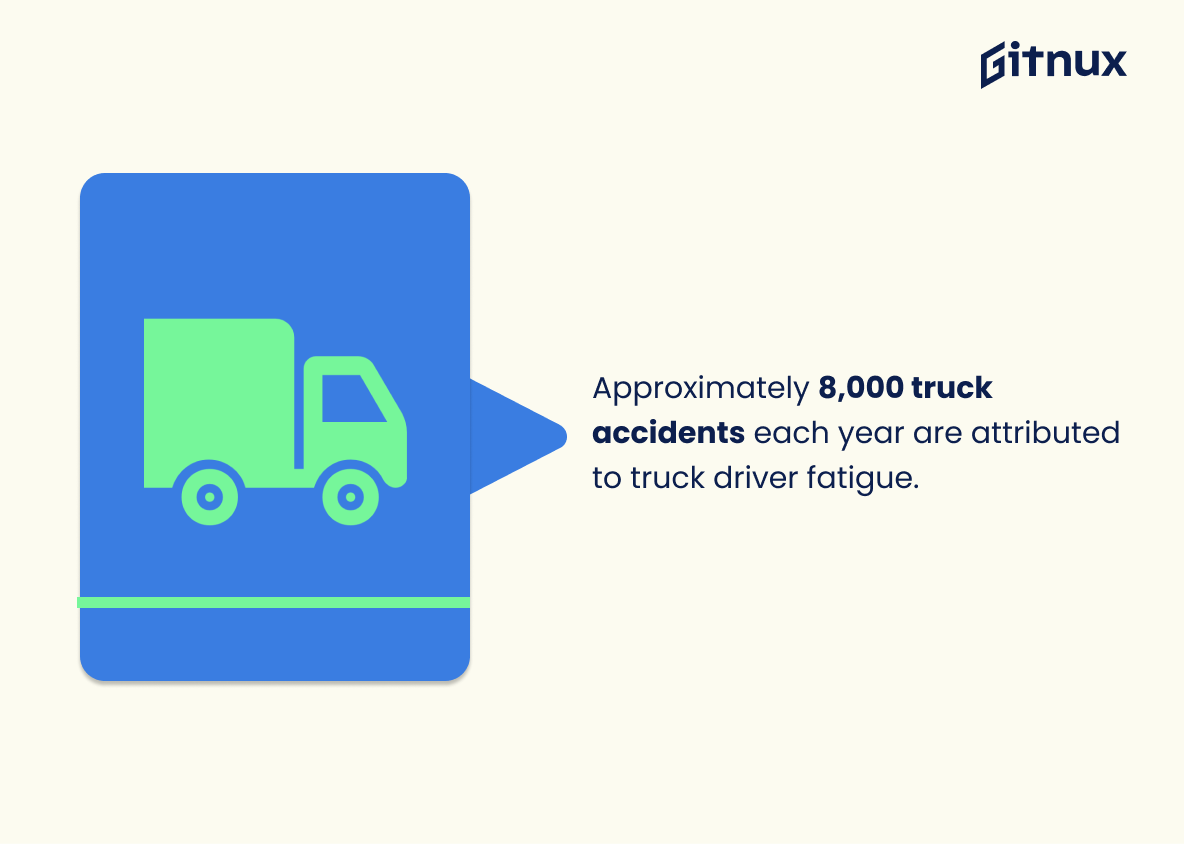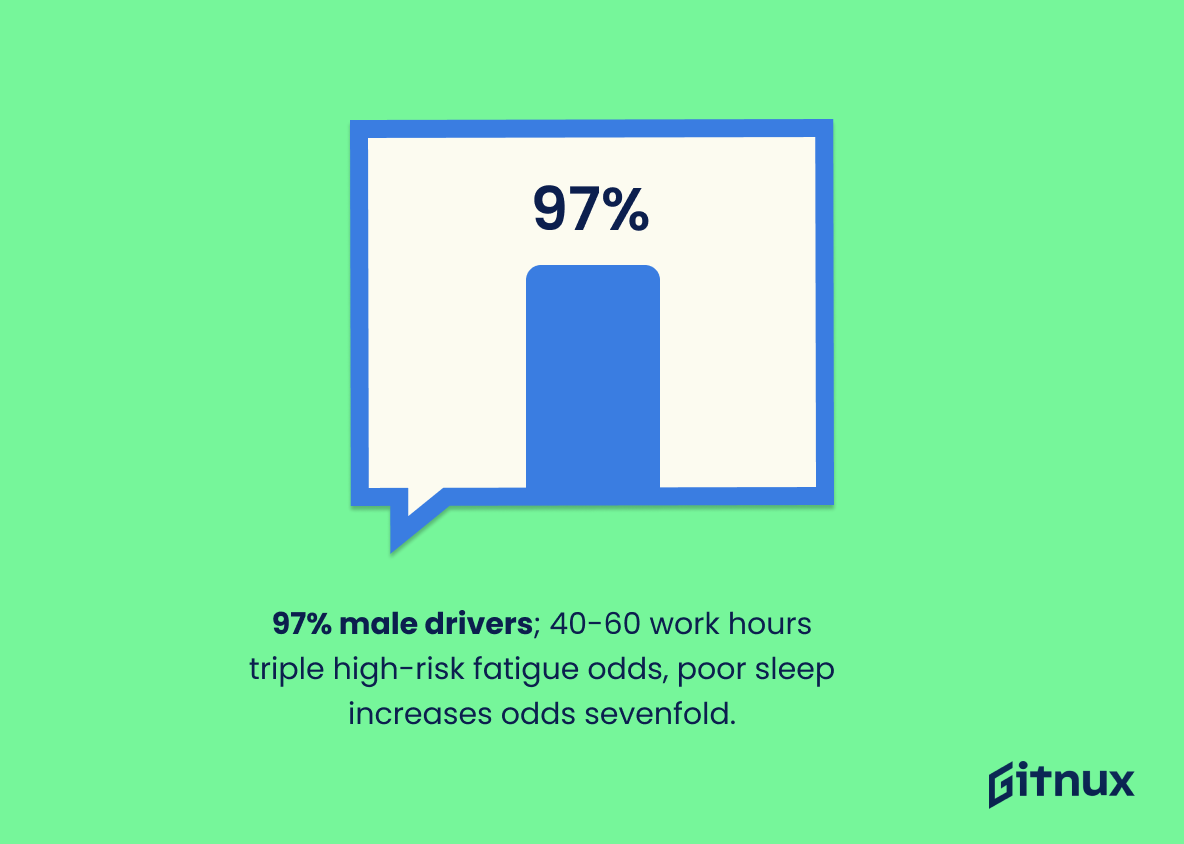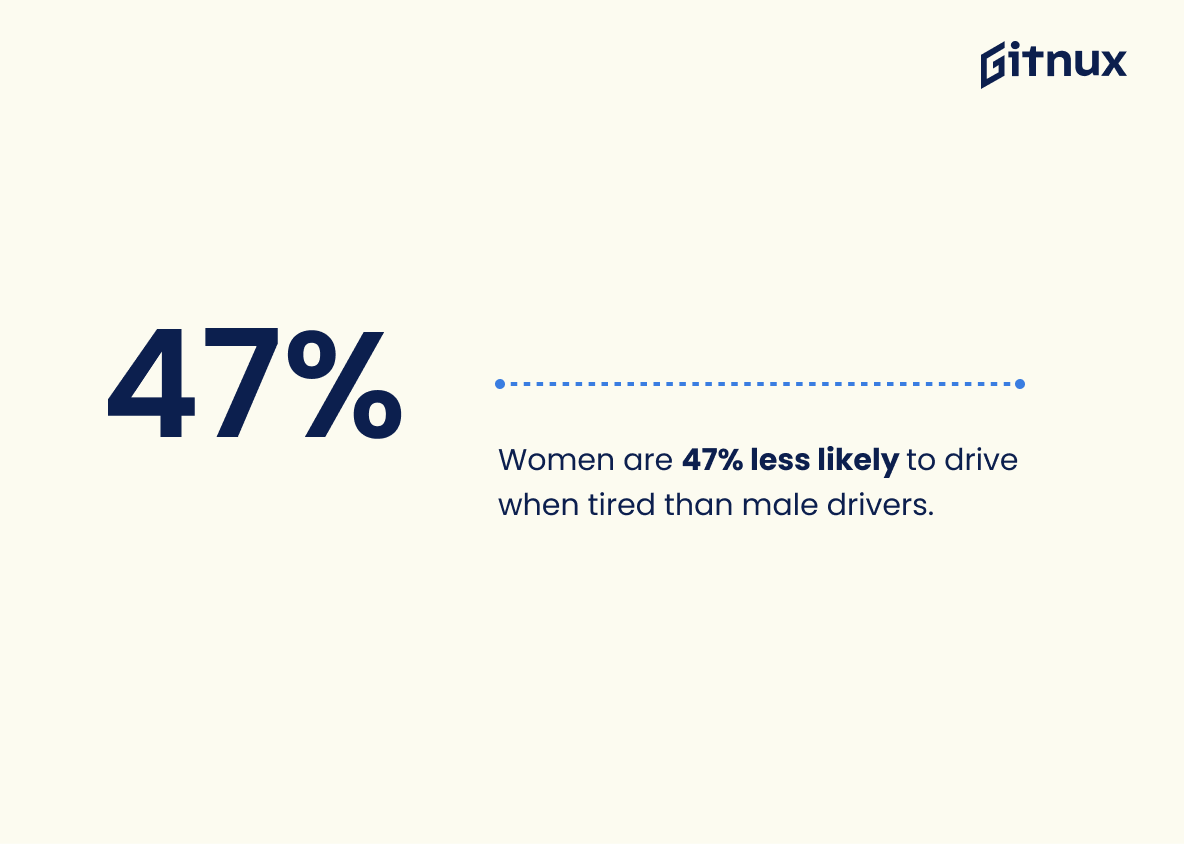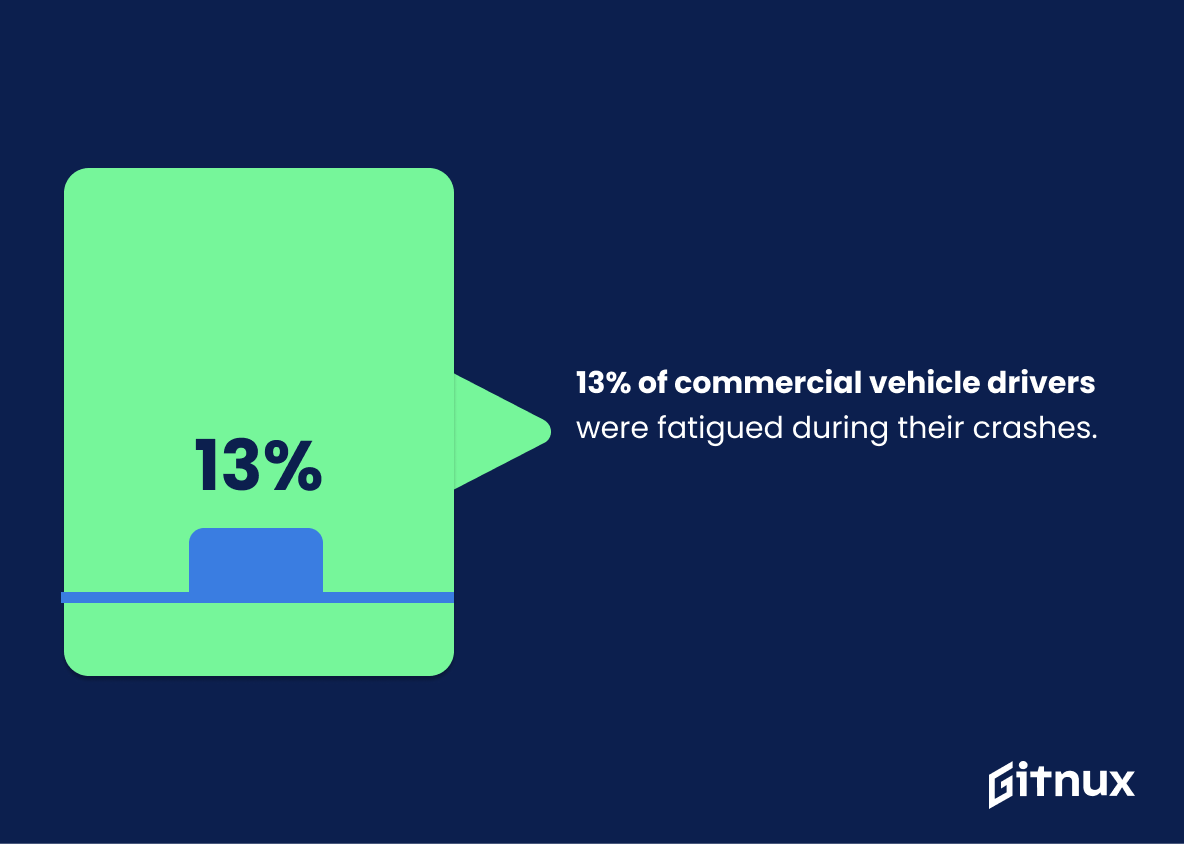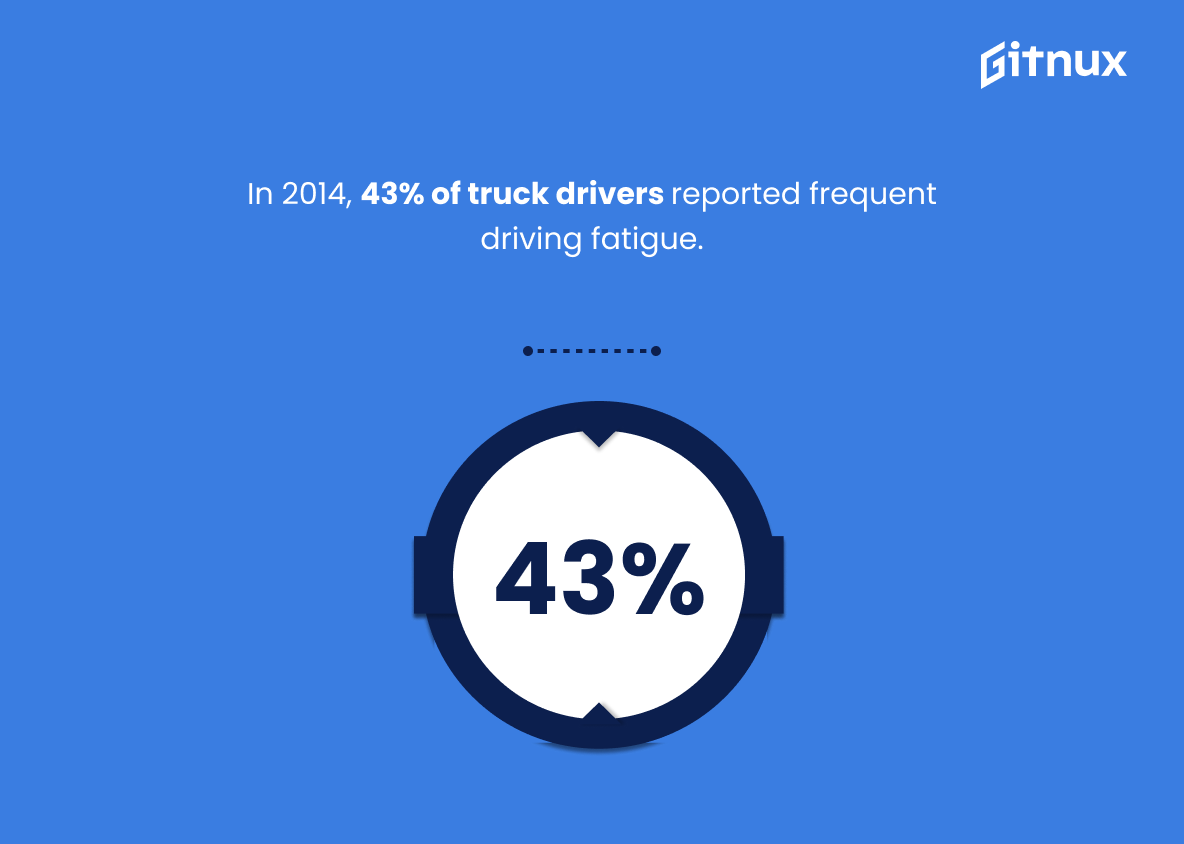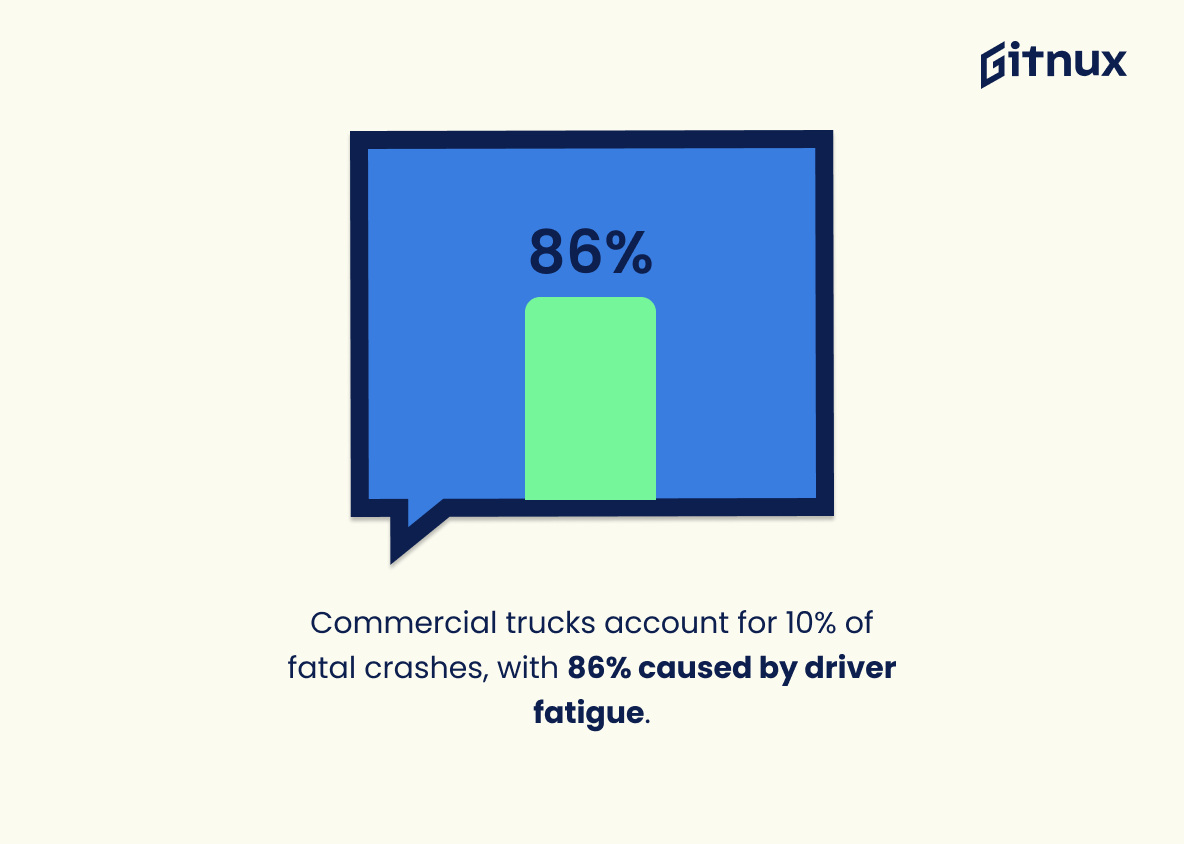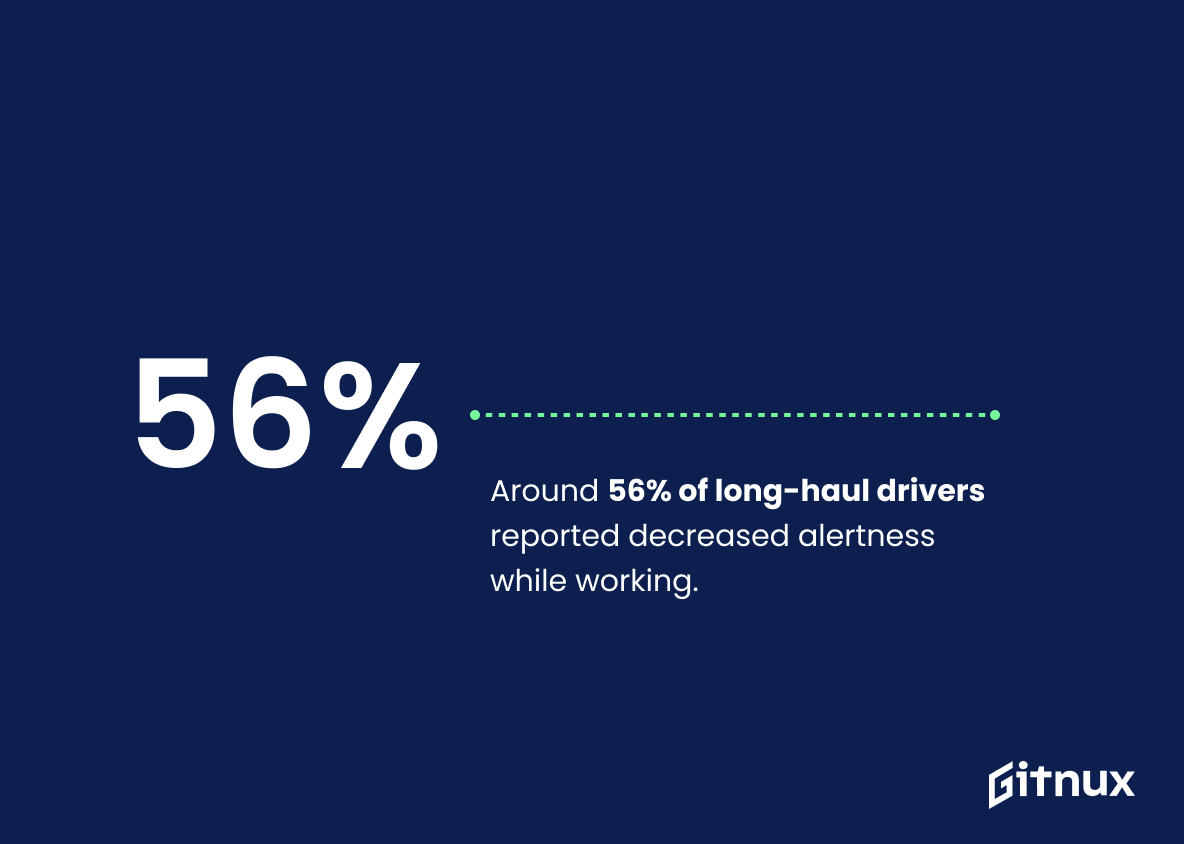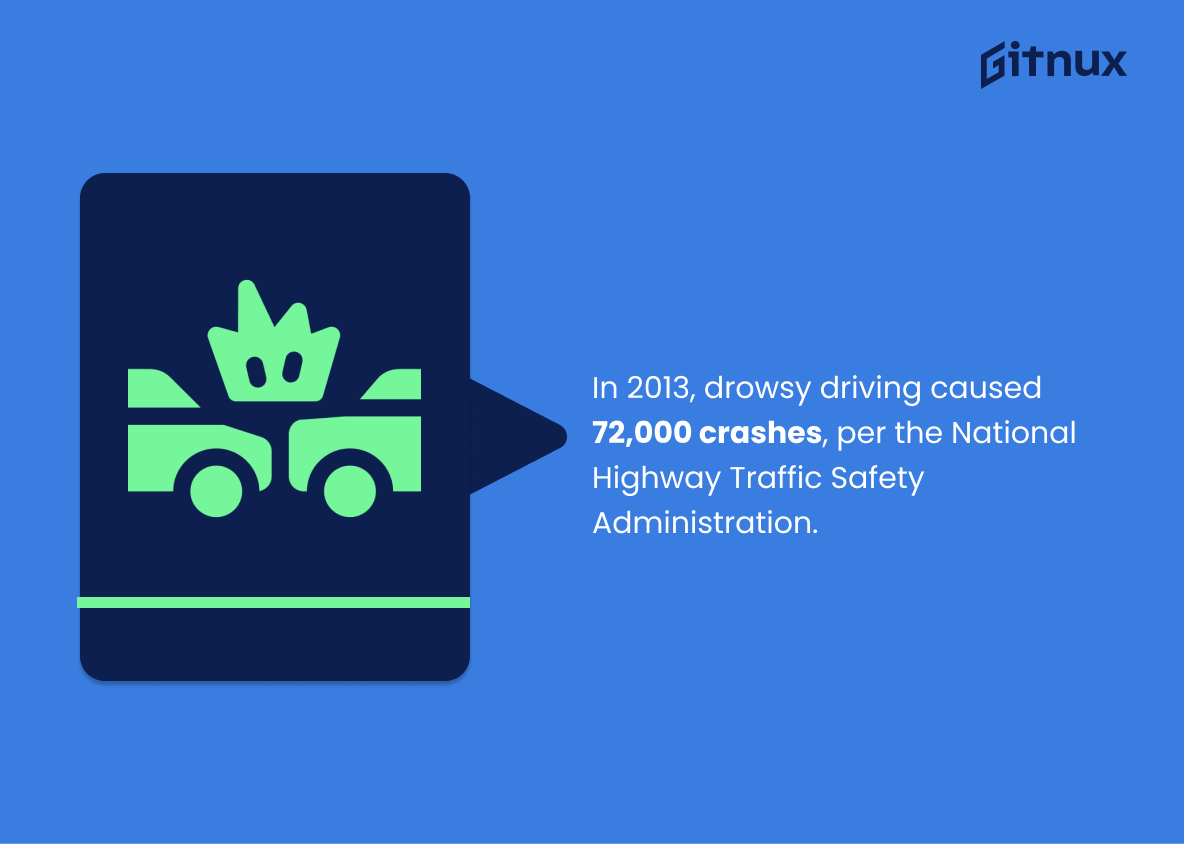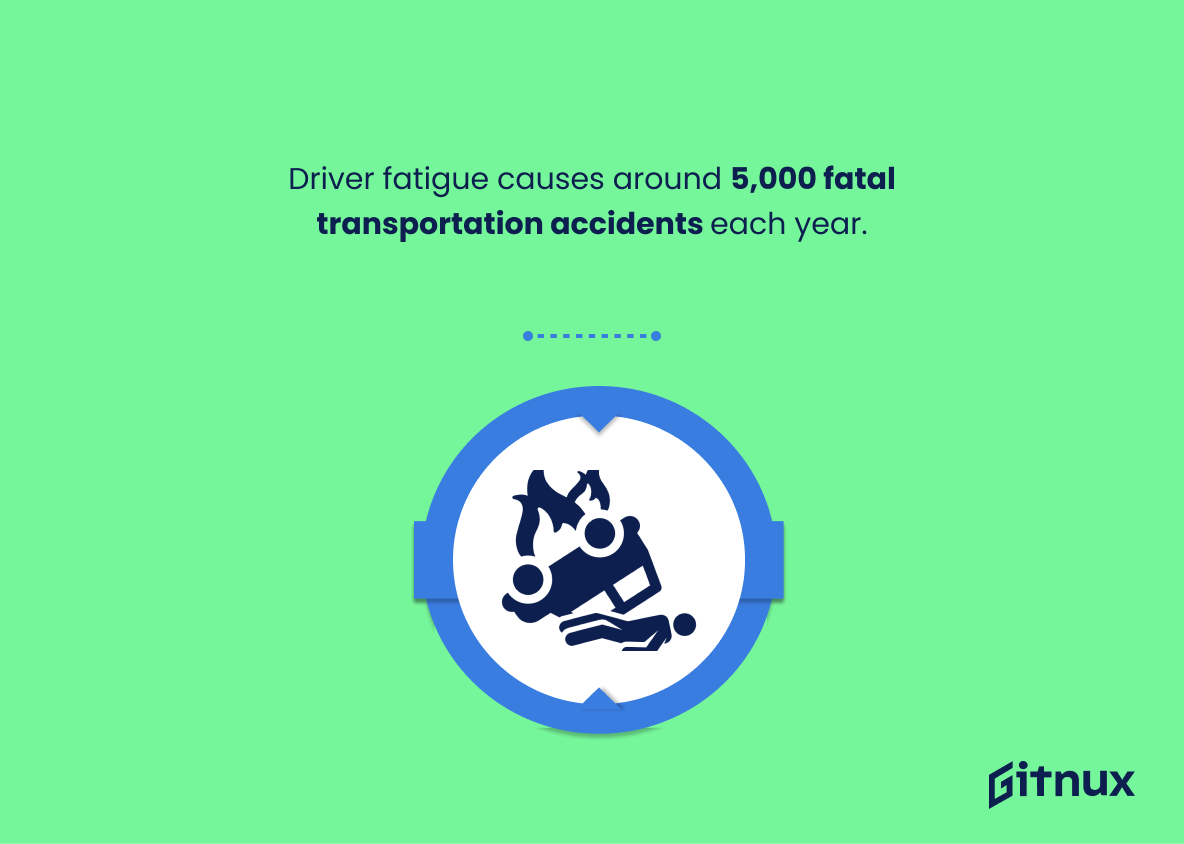Truck drivers are the backbone of the American economy, transporting goods and materials across the country. Unfortunately, long hours on the road can lead to fatigue, which can be dangerous for truck drivers and other motorists.
In this blog post, we’ll take a look at some of the latest truck driver fatigue statistics, and discuss what can be done to reduce the risks associated with this issue.
Truck Driver Fatigue: The Most Important Statistics
45% of drivers in the UK admitted to driving while too tired in February 2011, with the share never falling below 35%.
97% of drivers surveyed were male, and those who worked 40-60 hours had nearly three times higher odds of being in the high-risk fatigue group compared to those who worked less than 40 hours.
Truck Driver Fatigue Statistics Overview
Being awake for 18 hours is equivalent to being legally intoxicated, leaving drivers at equal risk for a crash.
It shows that being awake for 18 hours can have the same effect as being legally intoxicated, making it just as dangerous to drive while fatigued as it is to drive while under the influence of alcohol. This emphasizes the need for truck drivers to take breaks and get adequate rest in order to avoid fatigue-related crashes.
27.6% of drug consumption was found, particularly high for illicit CNS-stimulants (amphetamine and cocaine).
30% of truckers suffer from mental health disorders, with the most common being depression and anxiety.
Mental health disorders can therefore lead to fatigue, which can be dangerous for truckers and other drivers on the road. They can also lead to other health issues, such as substance abuse, which can further contribute to fatigue and increase the risk of accidents.
The prevalence of minor psychiatric disorders, depression, and anxiety among truck drivers is 6.1%, 13.6%, and 7.9%, respectively.
13% of all truck crashes are caused by driver fatigue and 36% are caused by truck drivers. This highlights the importance of ensuring that truck drivers are properly trained and aware of the risks associated with driving while fatigued.
Approximately 8,000 truck accidents each year are attributed to truck driver fatigue.
Fatigue can lead to decreased reaction times, impaired judgement, and an increased risk of accidents, which can have devastating impacts on both truck drivers and other drivers on the road.
38% of truck drivers in a South Asian country reported fatigue and sleepiness as the second major reason for road accidents.
Thus, there is a need for fleet owners to ensure that their drivers are not overburdened with long working hours. This can help to reduce the risk of road accidents and improve safety on the roads.
45% of drivers in the UK admitted to driving while too tired in February 2011, with the share never falling below 35%.
Driving while too tired is a common occurrence in the UK, and that it is a serious issue that needs to be addressed. This is especially true for truck drivers, who are at an increased risk of fatigue due to long hours and monotonous driving.
97% of drivers surveyed were male, and those who worked 40-60 hours had nearly three times higher odds of being in the high-risk fatigue group compared to those who worked less than 40 hours. Additionally, poor sleep increased the odds of high-risk fatigue by seven times.
Therefore, male truck drivers who work long hours and have poor sleep are more likely to be in the high-risk fatigue group, which can lead to dangerous situations on the road.
Women are 47% less likely to drive when tired than male drivers.
13% of commercial motor vehicle drivers were considered to have been fatigued at the time of their crash.
A significant portion of commercial motor vehicle drivers are operating their vehicles while fatigued, which can lead to serious accidents and injuries. This statistic serves as a call to action for truck drivers, employers, and policy makers to take steps to reduce the prevalence of fatigue-related crashes.
A 2014 study found that 43% of truck drivers reported often or sometimes feeling fatigued while driving.
Nearly half of truck drivers experience fatigue while driving. This is a concerning figure, as fatigue can lead to dangerous driving conditions and put both the driver and other motorists at risk. This statistic is an important piece of evidence in the discussion of truck driver fatigue, and serves to highlight the need for further research and action to address this issue.
The National Transportation Safety Board reported that at least 31% of truck crashes involving fatigue also involved drivers working over the 11-hour driving limit.
When drivers are working beyond the 11-hour driving limit, the risk of a crash increases significantly. This is an important statistic to consider when discussing the issue of truck driver fatigue and the need for better regulations and enforcement.
Commercial trucks are involved in 10% of all fatal crashes and 86% of those crashes are due to driver fatigue.
A significant proportion of fatal crashes are caused by truck drivers who are too tired to drive safely, emphasizing the need for better regulation and enforcement of truck driver fatigue laws.
Around 56% of long-haul drivers reported decreased alertness while working.
This is a serious issue that needs to be addressed. The consequences of driver fatigue can be dire, ranging from minor accidents to major catastrophes. It is essential that truck drivers take the necessary steps to ensure they are well-rested and alert while on the job.
National Highway Traffic Safety Administration estimates that drowsy driving was responsible for 72,000 crashes in 2013.
In 2013 alone, 72,000 crashes were attributed to drowsy driving, making it a major cause of accidents on the roads. This highlights the importance of truck drivers getting enough rest and avoiding fatigue while on the job.
An estimated 5,000 fatal accidents in the transportation industry can be attributed to driver fatigue annually.
This highlights the importance of taking measures to reduce the number of fatal accidents caused by driver fatigue, such as implementing stricter regulations and providing more resources for drivers to get adequate rest.
A study indicated that 67% of long-haul drivers reported some degree of sleepiness while driving during their work shift, and 49% reported having indicators of fatigue.
A large majority of long-haul drivers are not getting enough rest, leading to a heightened risk of accidents and other dangerous situations. This statistic is a call to action for trucking companies to take steps to ensure their drivers are getting the rest they need to stay safe on the roads.
4.4% of truck drivers self-report falling asleep while driving in the past 30 days.
A significant portion of truck drivers are putting themselves and others at risk by driving while exhausted. It is a sobering reminder of the need for truck drivers to take proper rest breaks and to be aware of the signs of fatigue.
A survey found that 28% of commercial truck drivers have sleep apnea, which may contribute to driver fatigue.
This statistic is a telling indication of the prevalence of sleep apnea among commercial truck drivers, which can be a major factor in driver fatigue. It highlights the importance of recognizing and addressing this issue in order to reduce the risk of fatigue-related accidents.
Between 14-17% of commercial truck crashes are related to driver fatigue.
A significant portion of commercial truck crashes are caused by this issue. It serves as a warning to truck drivers and employers alike that they must take steps to ensure that drivers are well-rested and alert while on the road.
In a 2016 study, 61% of long-haul truck drivers reported occasionally having difficulty staying awake while driving.
This statistic is a stark reminder of the dangers of truck driver fatigue. It highlights the prevalence of this issue and the potential risks it poses to the safety of drivers and other motorists on the road. It is a call to action for trucking companies to take steps to ensure their drivers are well-rested and alert while driving.
According to the Federal Motor Carrier Safety Administration, 47% of truck crashes are related to truck drivers’ physical and mental condition.
This statistic is a stark reminder of the importance of truck drivers’ physical and mental health when it comes to safety on the roads. Nearly half of all truck crashes are due to the driver’s condition, making it a major factor in the overall safety of truck drivers and other motorists. This statistic is a call to action for truck drivers and employers to prioritize the health and wellbeing of their drivers, as it could be the difference between life and death.
Drivers who have experienced sleep interruptions were found to be 8.8 times more likely to be involved in a crash or near-crash event.
This highlights the importance of ensuring that drivers are well-rested and alert while on the road, as the consequences of not doing so can be dire. This statistic serves as a warning to truck drivers and employers alike to take the necessary steps to prevent fatigue-related accidents.
Conclusion
In conclusion, truck driver fatigue is a serious issue that needs to be addressed. The statistics show that it is a major cause of trucking accidents, and it is important for truck drivers to be aware of the risks and take steps to reduce their fatigue levels.
Trucking companies should also take steps to ensure that their drivers are getting enough rest and are not driving while fatigued. By taking these steps, we can help reduce the number of trucking accidents caused by fatigue and make our roads safer for everyone.
References
1 – https://www.fmcsa.dot.gov/safety/driver-safety/cmv-driving-tips-references#R15
2 – https://www.ncbi.nlm.nih.gov/pmc/articles/PMC6614564/
3 – https://www.shragerlaw.com/how-mental-health-issues-can-affect-truck-driver-performance/
4 – https://www.ncbi.nlm.nih.gov/pmc/articles/PMC6164547/
5 – https://www.4grewallaw.com/blog/2022/april/the-prevalence-of-truck-driver-fatigue-and-accid/
6 – https://www.phillipslaw.com/truck-driver-fatigue-statistics/
7 – https://www.statista.com/statistics/1110224/india-reasons-for-accidents-cited-by-truck-drivers/
8 – https://www.statista.com/statistics/322656/prevalence-of-driver-fatigue-in-the-united-kingdom-uk/
9 – https://www.ncbi.nlm.nih.gov/pmc/articles/PMC9916394/
10 – https://www.esranet.eu/storage/minisites/esra2019thematicreportno4fatigue-update.pdf
11 – https://www.attorneykennugent.com
12 – https://ohsonline.com
13 – https://www.ncbi.nlm.nih.gov
14 – https://www.trucknews.com
15 – https://escholarship.org
16 – https://rosenfeldinjurylawyers.com
17 – https://www.fmcsa.dot.gov
18 – https://www.hindawi.com
19 – https://www.nhtsa.gov
